 "MLGCarGuy" (thejdmguy)
"MLGCarGuy" (thejdmguy)
03/30/2016 at 14:00 ē Filed to: None
 2
2
 14
14
 "MLGCarGuy" (thejdmguy)
"MLGCarGuy" (thejdmguy)
03/30/2016 at 14:00 ē Filed to: None |  2 2
|  14 14 |
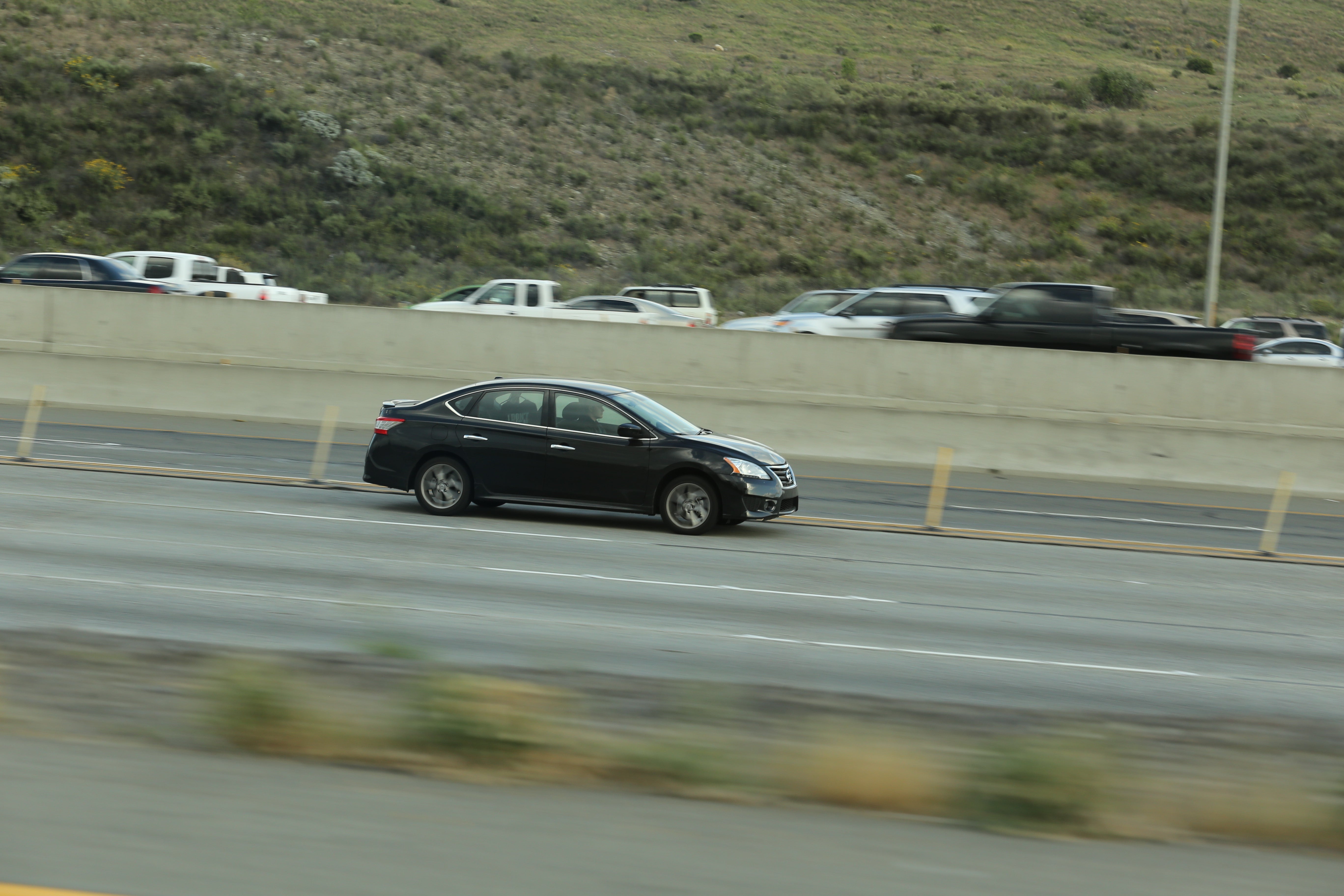
Iíve seen shots of moving cars, and decided to try it. Iíve never done a moving shot before, so on a long drive home, I fiddled with the focus, ISO, and shutter speed, and started taking pictures. Of course, this being the freeway, I didnít have the nicest cars to shoot. Feel free to give some tips.
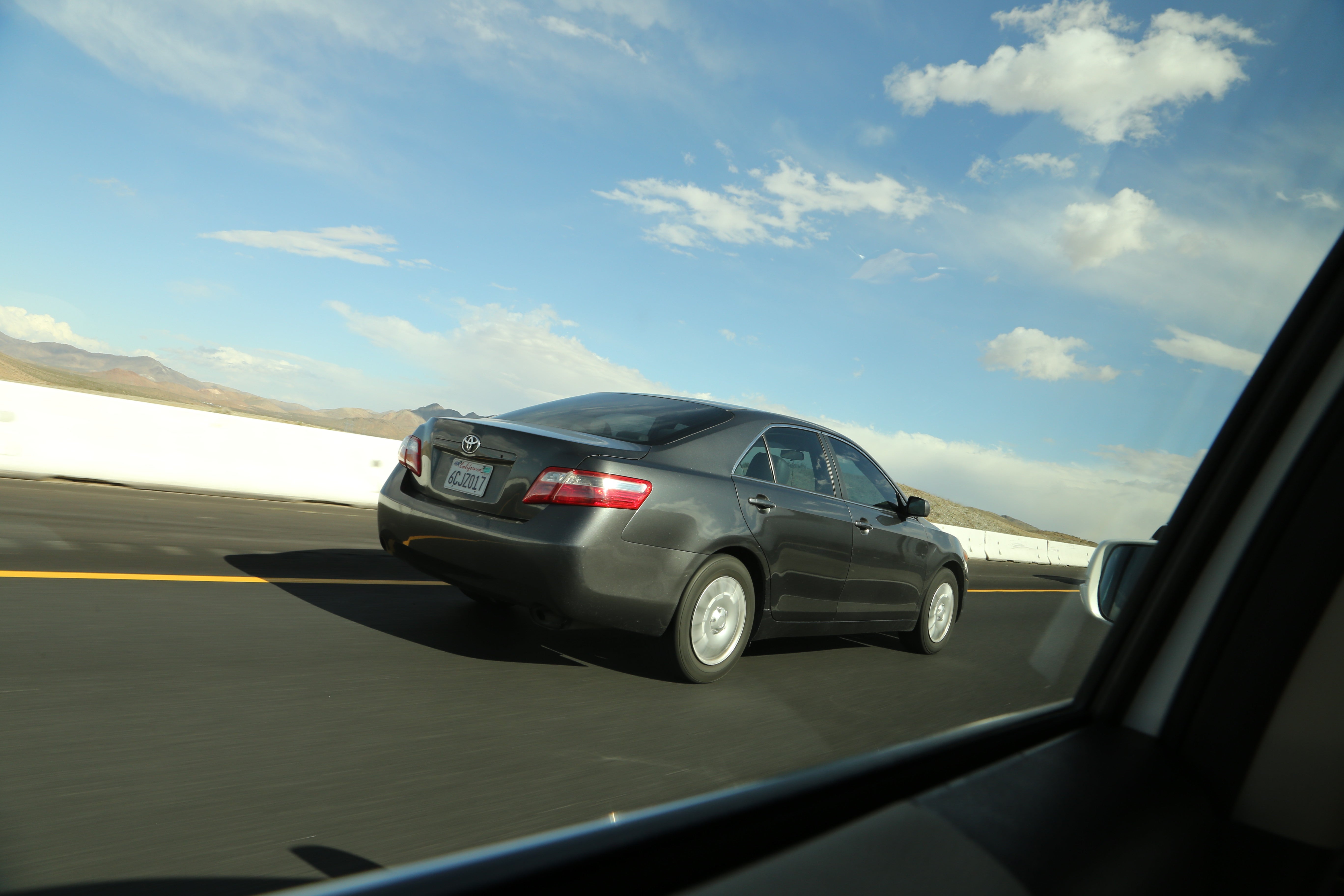
The Camry is really nicely focused, but I could have done something to prevent the interior reflections and get less of my car in the shot.
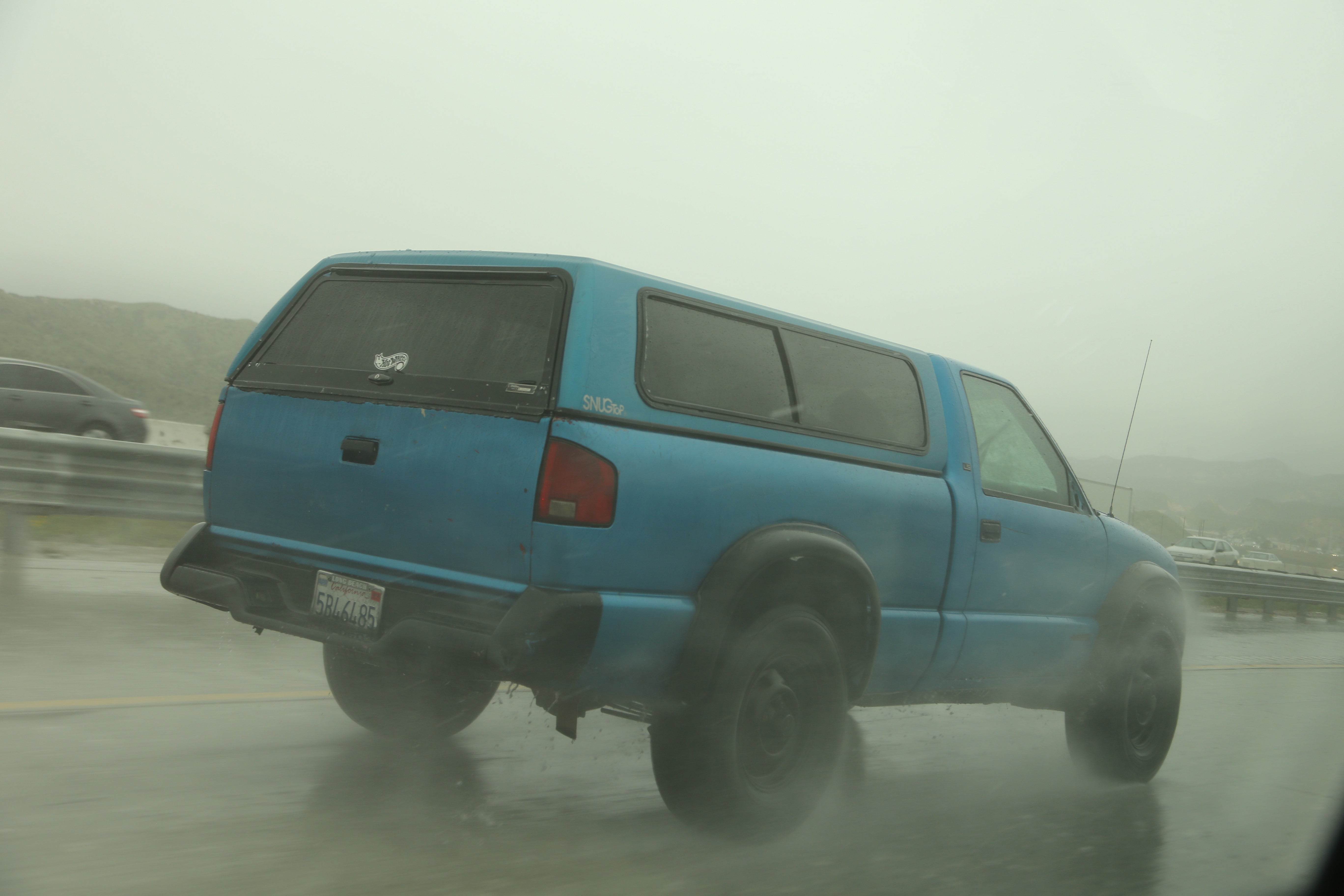
It was raining hard for a bit, and I saw the water flowing from the wheel arches of many cars, so I decided to take this picture.
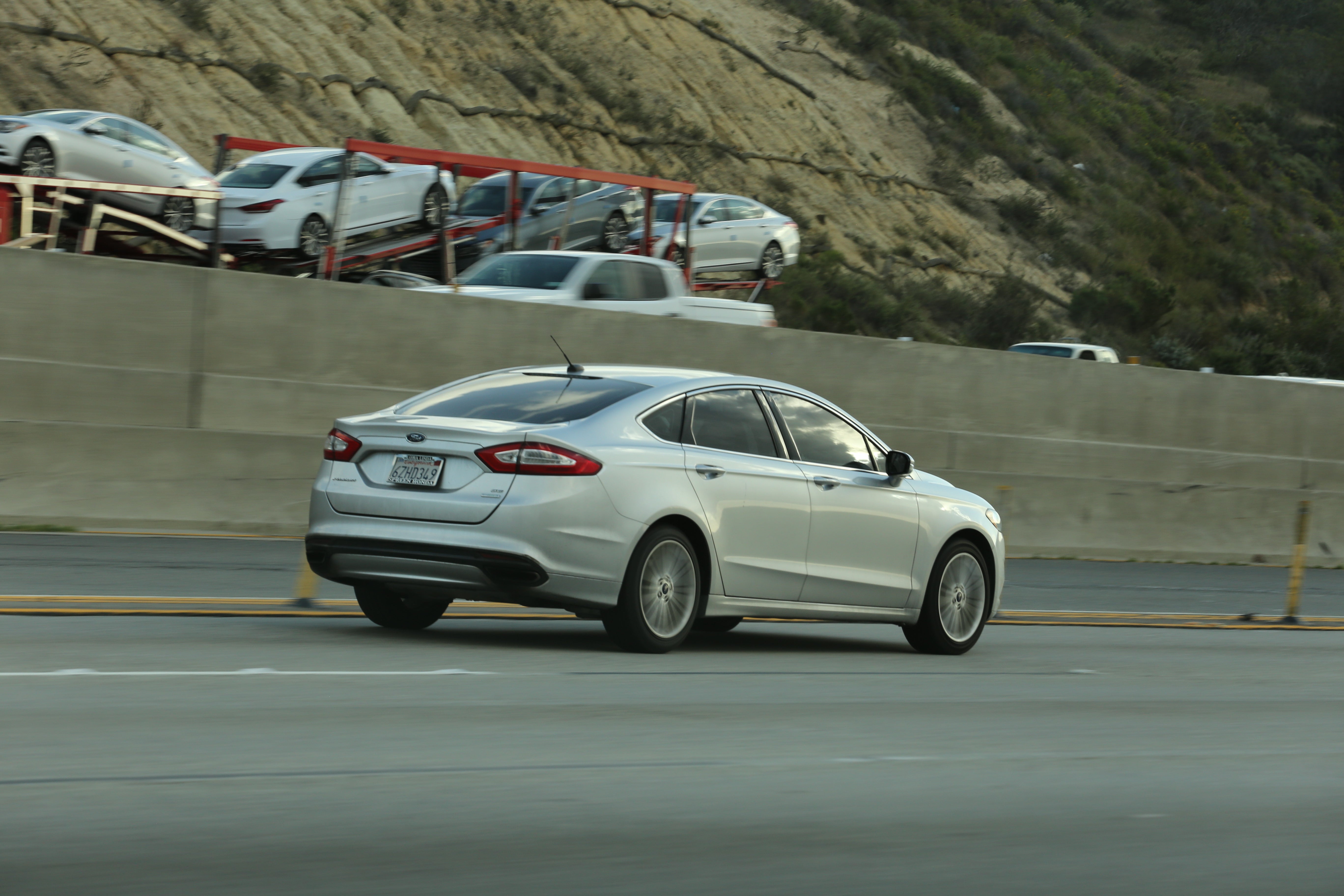
I could have focused on the car a bit more, but Iím pretty happy with this shot amd the Sentra shot.
 ttyymmnn
> MLGCarGuy
ttyymmnn
> MLGCarGuy
03/30/2016 at 14:14 |
|
What sort of results are you after? How you want the shot to look will determine what sort of setting you use.
 MLGCarGuy
> ttyymmnn
MLGCarGuy
> ttyymmnn
03/30/2016 at 14:26 |
|
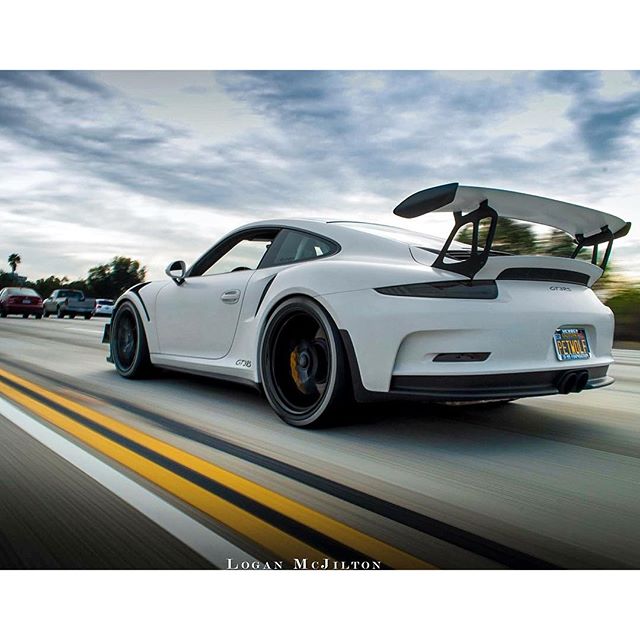
Iím trying to go for something like this.
 ttyymmnn
> MLGCarGuy
ttyymmnn
> MLGCarGuy
03/30/2016 at 14:42 |
|
That might actually be a composite of the car and the road. Notice also how low the photo was taken from, perhaps from an open van door or some other sort of photo/car rig. Aperture looks fairly small, since the cars in the background are fairly well in focus. You want a slower shutter, since you want some road blur. Ultimately, you need to pick which parameter you want to control and then adjust the others to it. So, pick your shutter, for instance, then balance the ISO and aperture to that. If your camera has priority modes, such as shutter or aperture priority, you can choose what you want to control, and your ISO, and the camera will choose the other. It also looks like thereís a fair bit of post processing in this photo for contrast, lighting and color. Does that help?
 MLGCarGuy
> ttyymmnn
MLGCarGuy
> ttyymmnn
03/30/2016 at 14:48 |
|
That definitely helps a lot. I canít make the angle happen (I donít have a van, nor do I have a camera rig) but Iíll try to practice fine-tuning all the settings. Thanks!
 pjhusa
> MLGCarGuy
pjhusa
> MLGCarGuy
03/30/2016 at 15:02 |
|
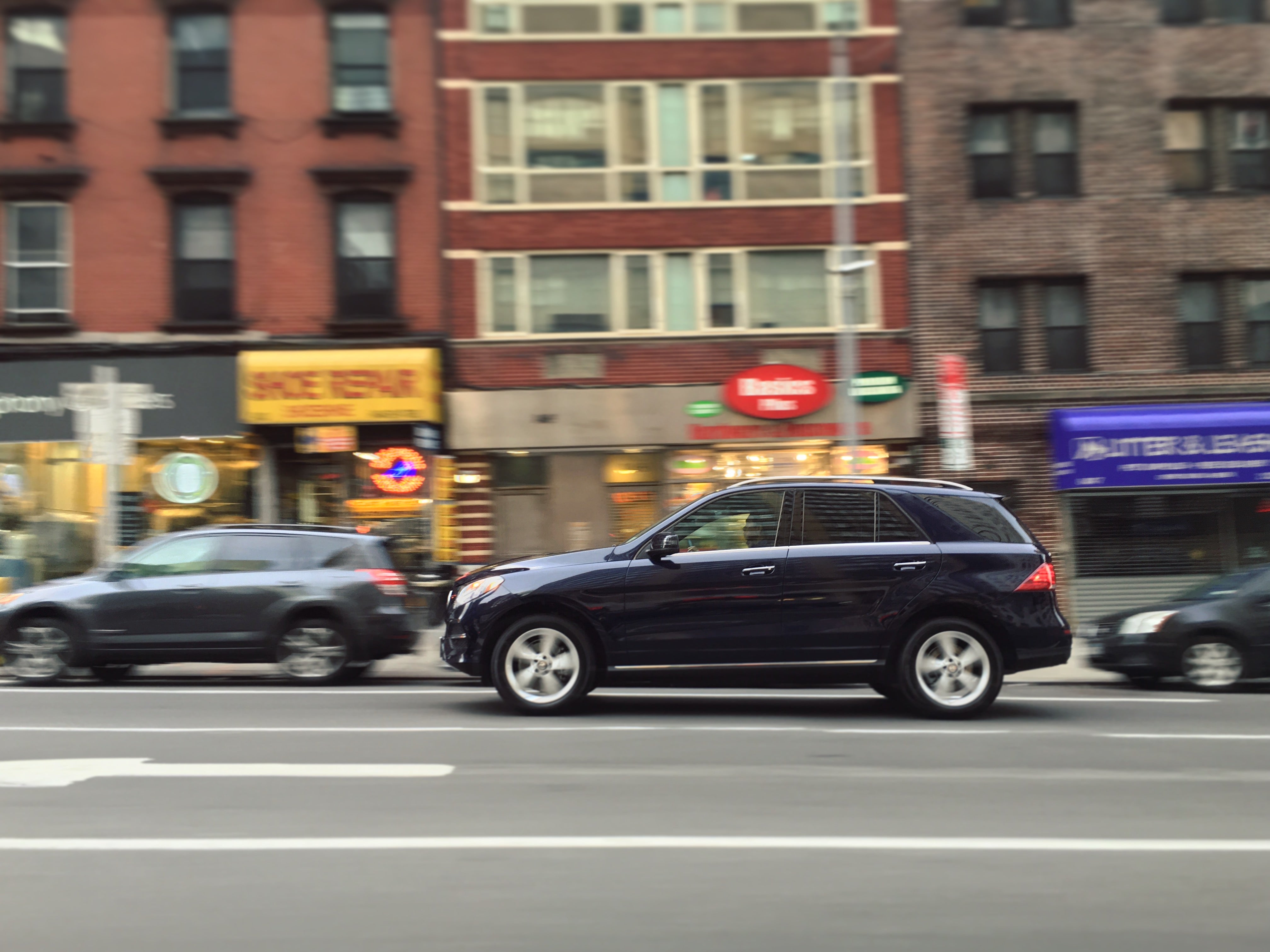
GLEEEEEEE
 Ballzonya
> MLGCarGuy
Ballzonya
> MLGCarGuy
03/30/2016 at 15:16 |
|
Buy one of these:
http://jalopnik.com/ford-built-theÖ
 ttyymmnn
> MLGCarGuy
ttyymmnn
> MLGCarGuy
03/30/2016 at 15:42 |
|
Hereís an even longer answer, and forgive me if it sounds pedantic, but I donít know how much experience you have with photography.
Your camera has three basic settings: ISO, aperture, and shutter speed. Think of them as legs of a three-legged stool. If you change one, you must adjust the others to make sure your stool is flat on the floor. I havenít ever done a moving car shoot, but I do take lots of pictures of airplanes. Itís my thing. And when I shoot, I have to take a number of factors into consideration, but first I have to decide what it is that I am shooting and what I want the result to be.
When shooting at distance, you will generally get sharper results with a smaller aperture (think what happens when you squint; you are closing down the aperture of your eyeball, distant objects become sharper). So, I like to start (when shooting jets) with an aperture of about 7.1 or 8.0. Then, I need as fast a shutter as the light will allow. Faster shutters generally net you sharper pictures. So, Iíll pick my ISO based on the light (100 or 200 if itís bright, 400 if itís cloudy, but not much higher than that). Then, I can pick a shutter speed that will give me good results. Remember, though, that a smaller aperture means less light in the camera which means a slower shutter. My Canon has a slider in the viewfinder that alerts me if the camera thinks the shot is too light or dark. I generally shoot one stop darker, since you can always pull details out of a dark picture, but if itís over exposed itís gone forever. If I find I still need a faster shutter, I can open the aperture or raise the ISO. But opening the aperture too far can make the picture softer, and too high an ISO can cause grainy pictures.
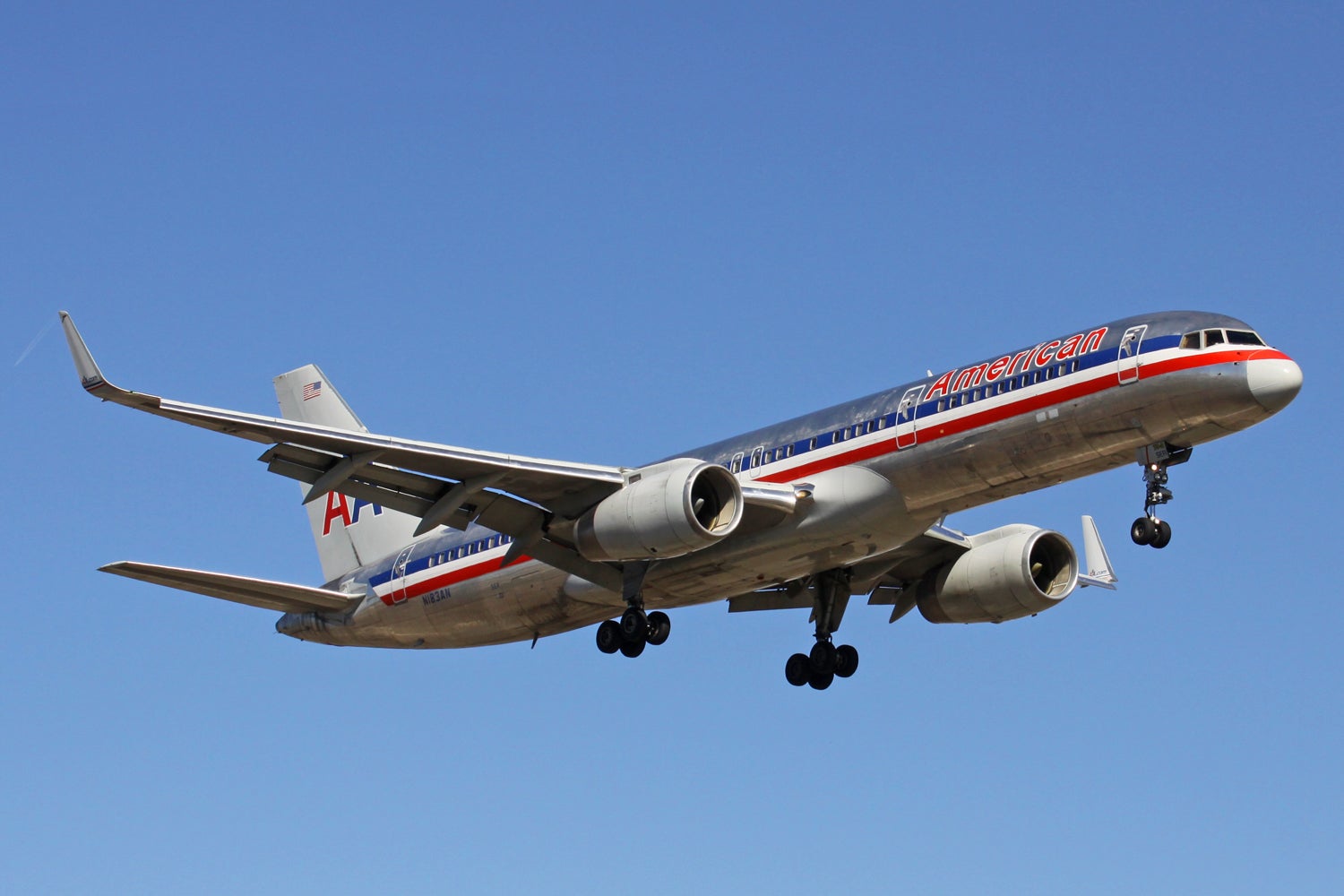
ISO 200, f/8, 1/1000 sec,
Shooting prop planes is a different animal. For those, I need a slower shutter so I can get nice prop blur (it never looks good to freeze a propeller). So, I have to drop my shutter down as low as 1/200, but then I need to adjust by closing down the aperture (f/9 or 10 or higher), or lowering the ISO, all of which is dependent on available light.
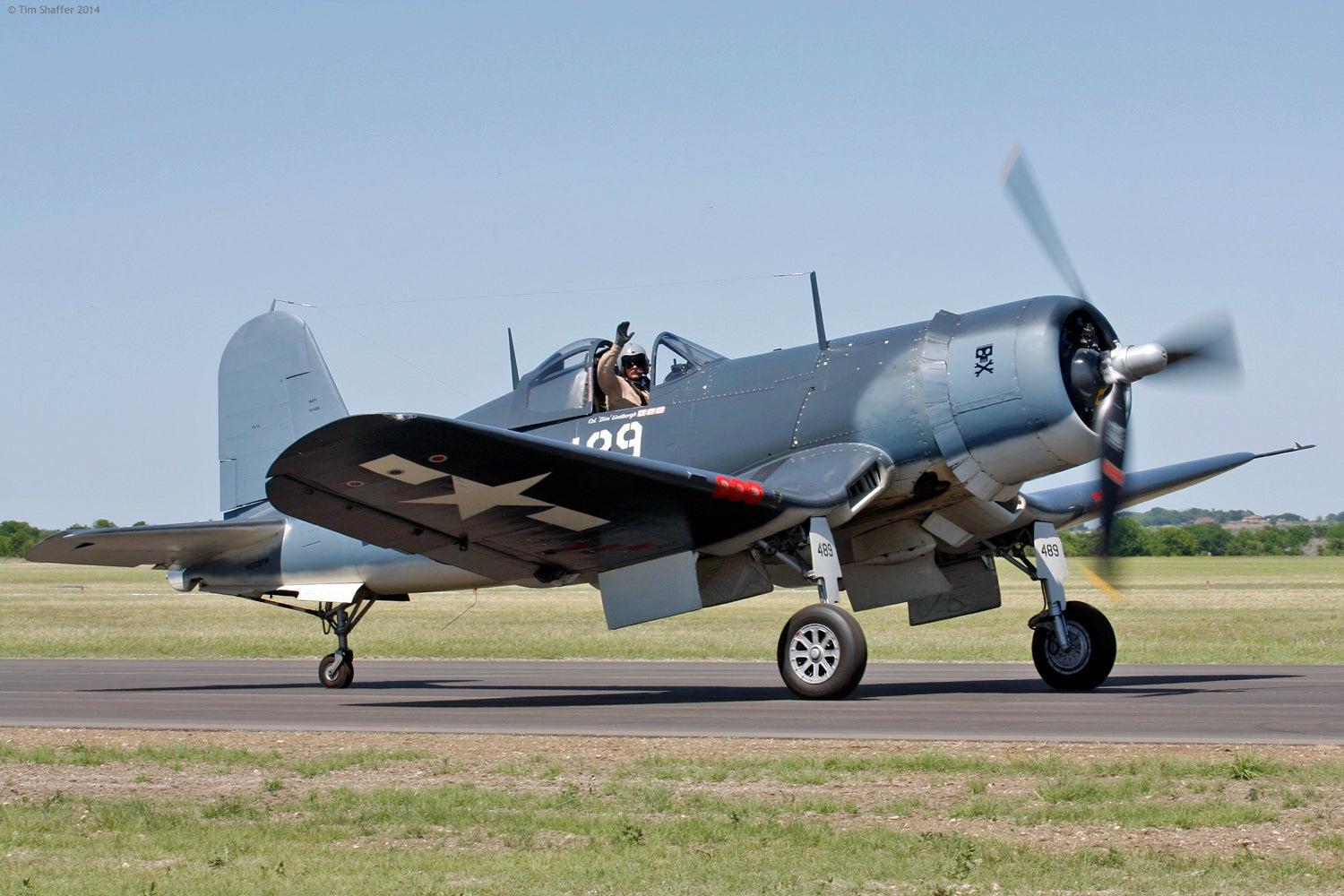
ISO 200, f/13, 1/200 sec (ISO is the same, but note the slower shutter for prop blur and smaller aperture to compensate for slower shutter)
If youíre not sure where to start, most cameras have a Program mode. There, you select the ISO based on available light and the camera does the rest. If you half-press the shutter, you can see what the camera thinks is a good setting, and then you can use that as a benchmark, put those settings into manual, and adjust as necessary.
Also, donít be afraid to crop your photos. Lots of people think that all cropping should be done in camera, but especially with moving subjects, a crop in editing allows you to focus on the subject while eliminating other elements of the photo that distract from the subject. You can also change the composition of the photo, moving your subject around in the frame as you see fit. As an example, hereís your picture of the Ford. I cropped it down (1.7 x 1 ratio) and adjusted the color, highlights and shadows. The car is now the focus of the shot, and the other vehicles are blurred a bit in the background, showing motion. A little slower shutter, and maybe a smaller aperture, would provide even more background blur, but youíd need to adjust your ISO accordingly.
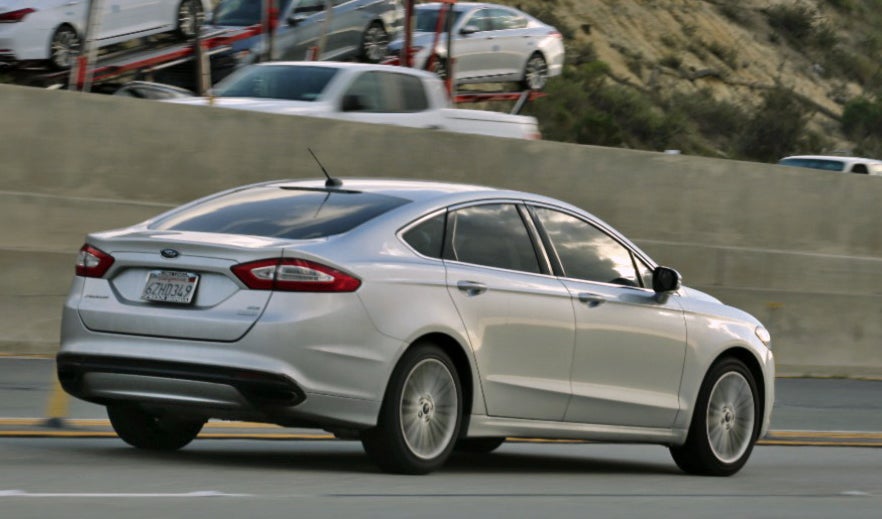
One more thing to think about is light. If you are going to arrange a shoot, perhaps with a friendís car, try to pick a day and direction where the sun is behind you, the lower the better.
I hope all this helps, and again, if you knew all this already I apologize. I am a teacher at heart, and sometimes I get carried away. I am also by no means an expert. Iím an amateur photographer, but itís important to remember that the word amateur comes from the Latin word meaning love . An amateur is not necessarily somebody who does something poorly, rather itís somebody who does something because they love to do it, and doesnít get paid for it. I like to think that I get a little better at it every time I squeeze the shutter. You can also ask for authorship on Photography , and post your photos there for comments and help with your work.
 Van Man, rocks the Man Van
> MLGCarGuy
Van Man, rocks the Man Van
> MLGCarGuy
03/30/2016 at 15:52 |
|
You don't have a van, but you can't deny- YOU NEED A VAN!!!
 MLGCarGuy
> ttyymmnn
MLGCarGuy
> ttyymmnn
03/30/2016 at 15:54 |
|
If youíre calling yourself an amateur then I donít even know what to consider myself as. Seriously. Your guide has a TON of new info for me.
Iím only now starting to experiment with the different camera settings; previously, whenever I attended a car event, I left my camera on auto. Over the past few days Iíve been on vacation and wanted to try to see if I could produce a shot that would be comparable to those I see online often. All Iíve been doing is placing the camera in shutter priority and fiddling with the shutter speed. There were a whole bunch of other shots that got deleted.
Anyway, thanks for your advice! Iíll try it out soon.
 ttyymmnn
> MLGCarGuy
ttyymmnn
> MLGCarGuy
03/30/2016 at 16:08 |
|
There were a whole bunch of other shots that got deleted.
When I do a shoot, say a morning at the airport, I probably take at least 100 photographs and keep maybe 10 at best. And Iíve lost track of how many shots Iíve missed. There is no photography without regret. But thatís the great thing about digital photography. Take a look at the EXIF data (the information that gives you the camera settings for each photo) and see what decisions the camera made. Then, you can think about what would happen if you alter one of them, and how you would have to adjust the others to balance it out. Starting in shutter priority is a great way to go. Take a look at the shots and see what aperture the camera chose. Because once you select your ISO, youíre 1/3 of the way there. Speeding up the shutter will require a widening of the aperture, and vice versa. Good luck and have fun!
 ttyymmnn
> MLGCarGuy
ttyymmnn
> MLGCarGuy
03/30/2016 at 16:44 |
|
More fun with cropping, and a great example of how a judicious crop can turn an average photo into a good one. This actually makes a pretty good shot! I like the slight tilt to it. It gives a great composition of large to small, as if the Toyota is going into the distance (see the second photo). I fiddled with the lighting and color a bit to try to get a bluer sky. Were you shooting through a closed window? In retrospect, I might have cropped it a little wider, to get the whole shadow. But I was limited by the window frame of your car. Nice light, though.
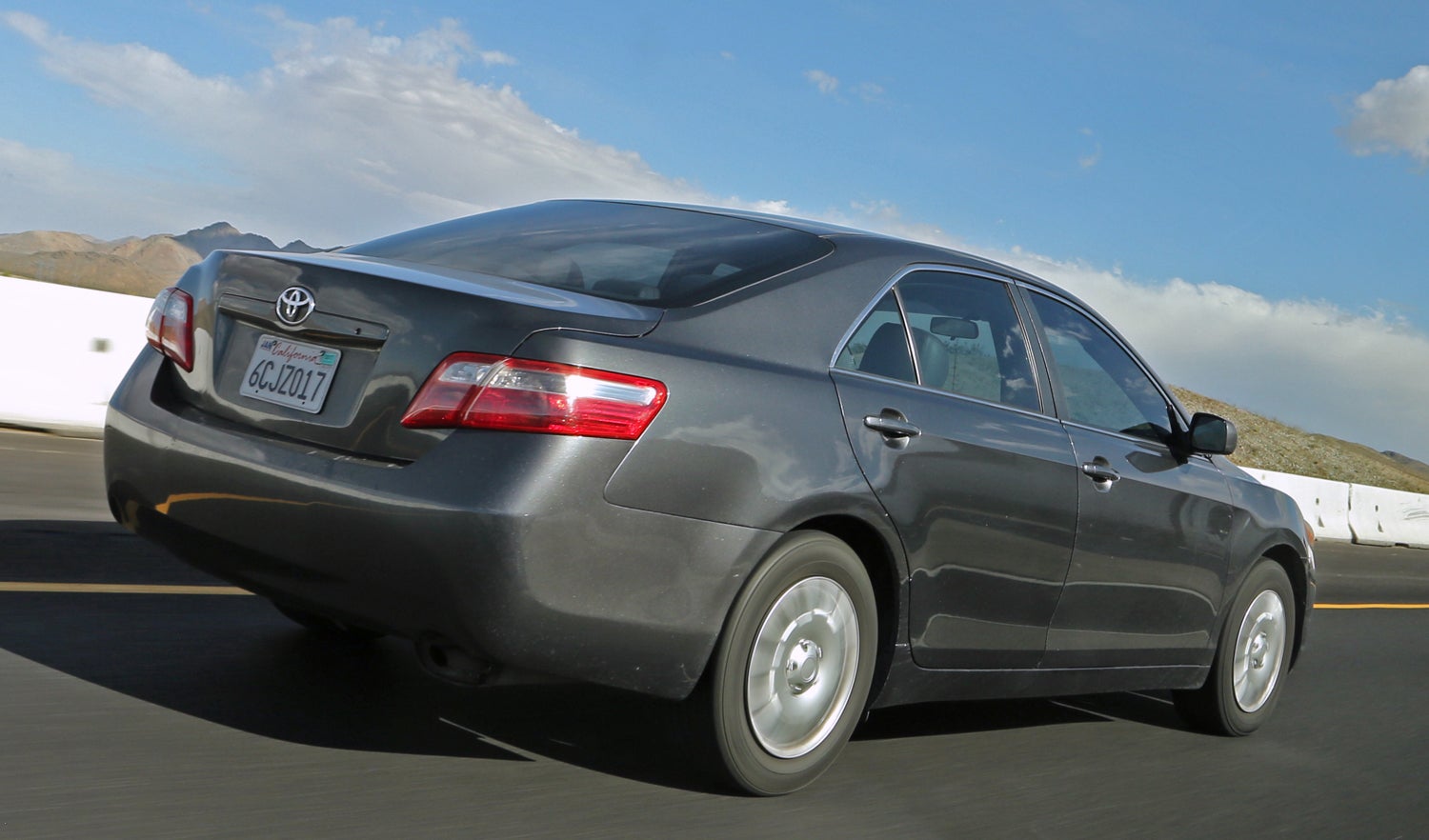
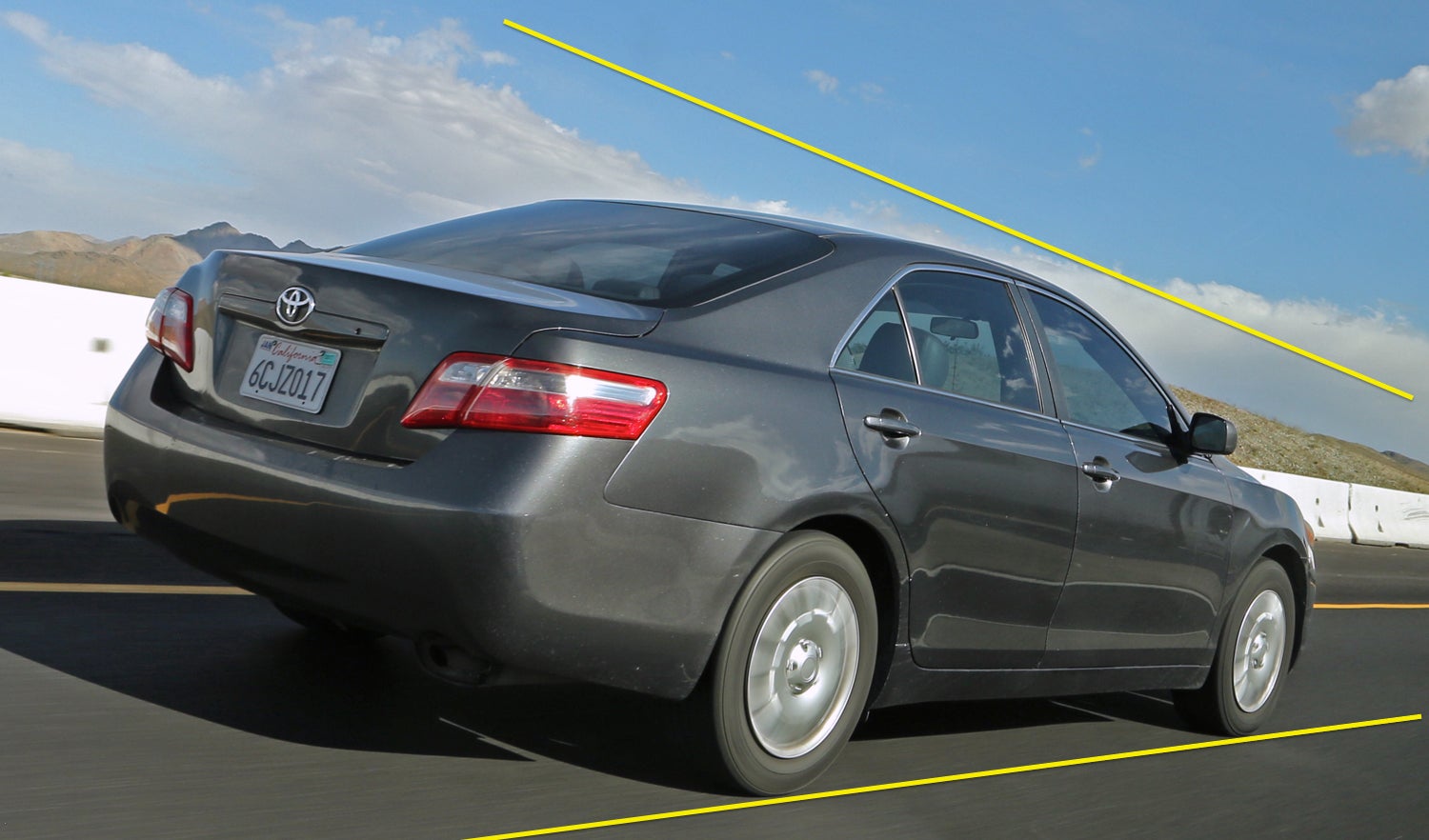
 MLGCarGuy
> ttyymmnn
MLGCarGuy
> ttyymmnn
03/30/2016 at 17:01 |
|
I was shooting through a closed window.
 ttyymmnn
> MLGCarGuy
ttyymmnn
> MLGCarGuy
03/30/2016 at 17:03 |
|
Open the window! Breathe that Cali air!
 MLGCarGuy
> ttyymmnn
MLGCarGuy
> ttyymmnn
03/30/2016 at 17:42 |
|
Thereís air in California?